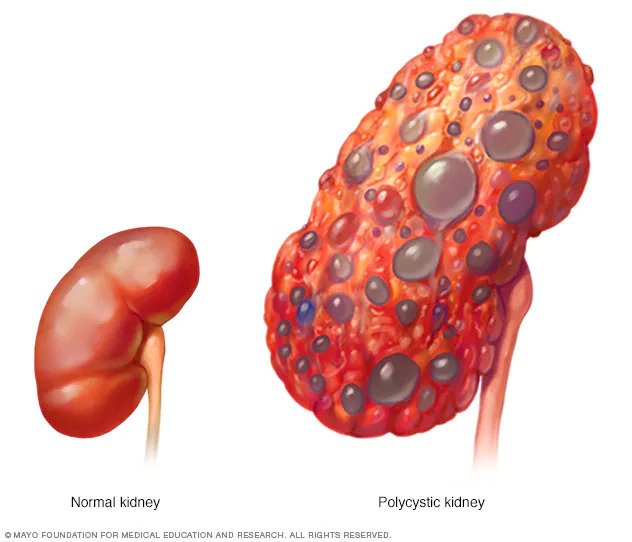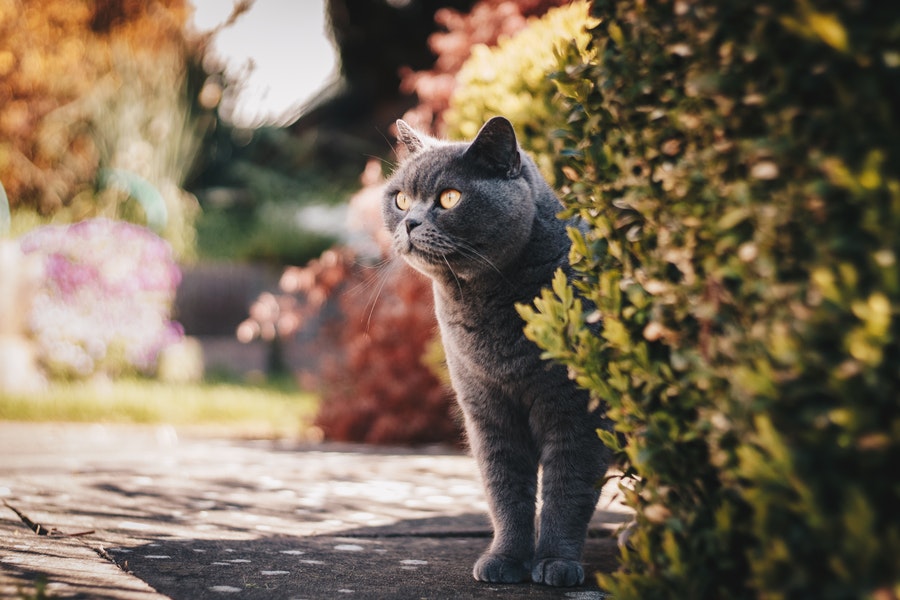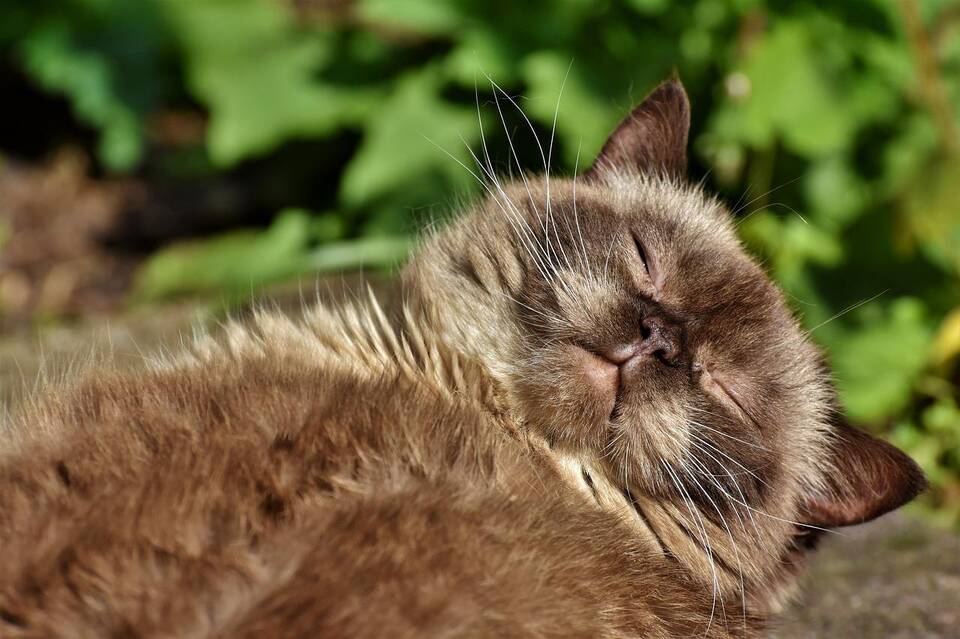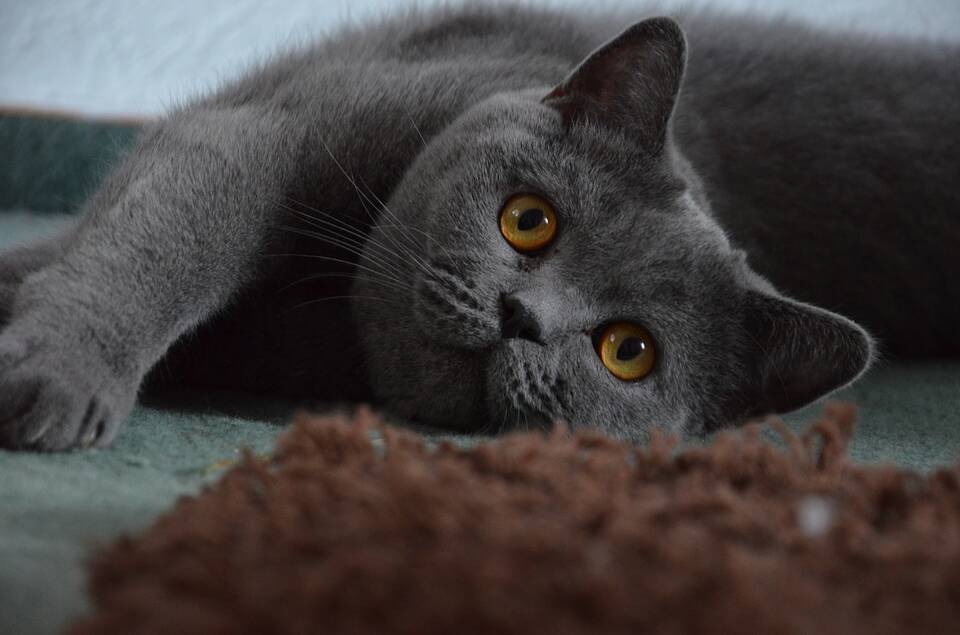If you own one of these cute British blues, you should be aware of the signs and symptoms of Polycystic Kidney Disease In British Shorthairs.
Although rare, PKD is a potentially life-threatening genetic disorder that can cause your cat to develop cysts on their kidneys.
Early detection is key, so be sure to watch out for any changes in your cat’s behavior or physical appearance and take them to the vet if you have any concerns.
With proper care, cats with PKD can lead long and healthy lives.
What Is British Shorthair Polycystic Kidney Disease?
Polycystic kidney disease is a genetic disorder that causes the formation of cysts on the kidneys. These cysts are fluid-filled sacs that can grow to a large size and eventually lead to renal failure. PKD is one of the most common hereditary renal disorders in cats and it affects both male and female British Shorthairs equally.
Causes Of Polycystic Kidney Disease In British Shorthairs
The exact cause of PKD is unknown, but it is believed to be caused by a mutation in a gene that regulates cell division.
This mutation leads to an overgrowth of cells in the kidneys, which form into cysts.
The cysts then begin to replace healthy tissue, causing the kidneys to become enlarged and eventually fail.
Progression Of PKD In BSH
PKD is a progressive disease, meaning it will usually get worse over time.
In the early stages of the disease, most cats will not show any signs or symptoms.
As the disease progresses and the cysts begin to grow, your cat may start to show signs of kidney failure, such as increased thirst and urination, weight loss, lethargy, and vomiting.
If left untreated, PKD will eventually lead to renal failure and possibly death.
How Is Polycystic Kidney Disease Diagnosed?
If you notice any changes in your cat’s behavior or physical appearance, it’s important to take them to the vet for a check-up.
Your vet will likely perform a complete physical examination and may order blood and urine tests to look for abnormalities.
An ultrasound can also be used to confirm the presence of kidney cysts.
How Is Polycystic Kidney Disease Treated?
There is no cure for PKD. But there are treatments available that can help to slow the progression of the disease and improve your cat’s quality of life.
Your vet may recommend a special diet and supplements to help support your cat’s kidneys.
They may also prescribe medication to help control any signs or symptoms your cat is experiencing.
In some cases, surgery may be necessary to remove large cysts or relieve pressure on the kidneys.
However, surgery is not always an option. So it’s important to discuss all of your treatment options with your vet before making a decision.
How Can I Prevent Polycystic Kidney Disease In My Cat?
There is no way to prevent PKD, as it is a genetic disorder.
However, if you are planning on breeding your British Shorthair, it’s important to have them tested for the disease first.
This will help to ensure that only healthy cats are bred and that kittens born with PKD are not brought into the world.
This may sound cruel but this disease can be very traumatizing and painful for cats so we’re better off trying to reduce the chances of it being passed on.
Symptoms Of PKD In British Shorthairs

Polycystic kidney disease (PKD) causes the formation of multiple cysts in the kidneys.
PKD cysts are fluid-filled sacs that can grow very large and put pressure on the surrounding tissues.
The severity of PKD varies from cat to cat, but generally, cats with PKD will have an enlarged liver and spleen, high blood pressure, and eventual kidney failure.
There are two types of PKD: autosomal dominant PKD (ADPKD) and autosomal recessive PKD (ARPKD) (Source).
ADPKD is the most common form of PKD in cats, while ARPKD is much less common.
Cats with ADPKD will typically have fewer and smaller cysts than those with ARPKD.
Symptoms of PKD in British Shorthairs can vary depending on the severity of the disease.
Some cats may show no symptoms at all, while others may have a progressive decline in kidney function.
The most common symptom of PKD is high blood pressure, which can lead to other health problems such as heart disease or stroke.
Other symptoms include weight loss, decreased appetite, vomiting, diarrhea, and increased urination.
In advanced cases, cats may develop kidney failure, which can be fatal.
Life Expectancy Of BSH With PKD?
The life expectancy of a cat with PKD depends on the severity of the disease.
Some cats may only have a few small cysts and live a normal lifespan, while others may develop kidney failure and require lifelong treatment.
In general, the earlier PKD is diagnosed, the better the prognosis.
Other Common British Shorthair Health Issues
British Shorthair cats are generally regarded as a healthy and strong breed.
However, they are susceptible to some hereditary diseases such as Hemophilia B and Hypertrophic Cardiomyopathy (HCM).
Check out our article if you are interested in learning more about British Shorthairs’ common health issues.
Conclusion
Polycystic Kidney Disease In British Shorthairs is a genetic disorder that causes the formation of multiple cysts in the kidneys.
These cysts can grow very large and put pressure on the surrounding tissues, leading to progressive kidney failure.
There is no cure for PKD, but there are treatments available that can help to slow the progression of the disease and improve your cat’s quality of life.
If you are planning on breeding your British Shorthair, it’s important to have them tested for PKD first.
This will help to ensure that only healthy cats are bred and that kittens born with PKD are not brought into the world.
Symptoms of PKD in British Shorthairs can vary depending on the severity of the disease.
Some cats may show no symptoms at all, while others may have a progressive decline in kidney function.
In advanced cases, cats may develop kidney failure, which can be fatal. The life expectancy of a cat with PKD depends on the severity of the disease.
Some cats may only have a few small cysts and live a normal lifespan, while others may develop kidney failure and require lifelong treatment.
If you think your cat may have PKD, it’s important to see your vet for a diagnosis as soon as possible. Early diagnosis and treatment are key to prolonging your cat’s life.
Thanks for reading!
Elliot is the owner and lead writer at Lais Lairs. He is the proud owner of a Maine Coon/Siberian Mix cat named Lai. His oldest cat lived to be 18 years old so he’s learned a thing or two about keeping pets. When he’s not writing you can find him playing video games or playing fetch with Lai.



